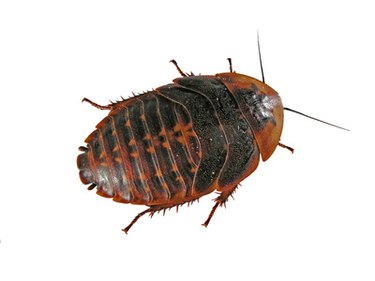Things You'll Need
5-gallon bucket
Insecticide additive
Stir stick or paint shaker

If you live in a region rich with bug life, you may appreciate bugs in their natural habitat but not in or on your home. The Environmental Protection Agency has registered several insecticides that when added to paint are generally safe for humans and pets but kill many types of insects. Some formulas are EPA-registered for both interior and exterior use; others for exteriors only. Insecticides can be added to paint not only for your home but for barns, kennels and stables.
Step 1
Pour your paint into a clean 5-gallon bucket for mixing.
Video of the Day
Step 2
Add the insecticide according to label directions. Amounts vary depending on the brand; you will typically need between 1 and 2 ounces of insecticide per gallon.
Step 3
Mix the paint thoroughly with either a stir stick or on a paint shaker.
Step 4
Stir the paint about once an hour during use to prevent it settling to the bottom of the bucket.
Tip
If using more than 5 gallons of paint, only mix what you'll use within three hours. The insecticide loses effectiveness when mixed into paint for longer periods of time.
Use normal painting practices. You do not have to do anything different when using paint with added insecticide. Most insecticide paint additives can be added to either oil- or water-based paint or stain and applied by brush, roller or spray.
Hose down exterior surfaces every year. The treated paint is more effective when clean.
Warning
Wear protective clothing when working with insecticides, including eye and skin protection. Only work in a well-ventilated area, and wear a respirator when spraying paint laced with insecticide.
Material Safety Data Sheets for insecticide paint additives warn that they may be irritating to skin and mucous membranes.
Video of the Day